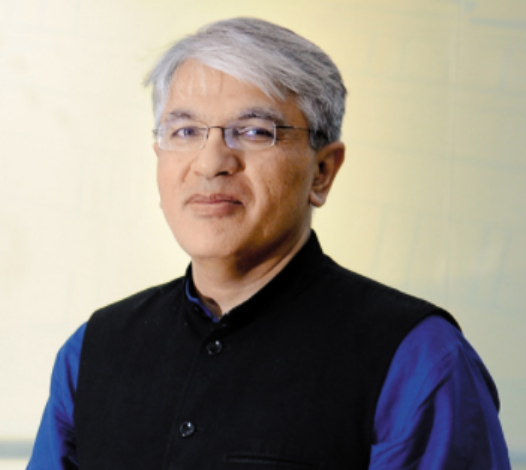US, me, myself

An authored of Manish Sabharwal in Indian Express talks about Trump’s economic nationalism.
President Trump’s economic nationalism reinforces the urgency of fixing India’s land labour markets.
Deng Xiaoping was highly skilled, but he had something more valuable: luck. Starting his economic reforms in 1978 meant that China caught a 30-year supercycle of global economic growth, manufacturing offshoring, and global trade liberalisation. The third was important. The WTO mission of removing sand in the wheels of global trade culminating in China’s membership was enabled by “no trade-off politics” in the US that allowed American politicians to keep almost everybody happy—employees, consumers, investors, pensioners, importers, and exporters. Low-wage workers were uneasy, but for a while, their hesitations were blunted by their joy in lower prices as consumers. No longer; they asserted their rights as citizens in Trump’s election.
Trump’s inauguration speech promised to follow “two simple rules: we will buy American and hire American” and his visa blacklist suggests he knows who elected him. Giving American voters the benefit of doubt that Trump’s victory was driven by economics rather than race and religion, what does it mean for Indian IT companies and policymakers?
America and India have been open to each other in three ways over the last 50 years: People, goods and services, and capital. People’s openness is chronicled in a wonderful new book The Other One Percent by Sanjoy Chakravorty, Devesh Kapur and Nirvikar Singh that chronicles the journey of 3.8 million Indians in America that began with a 1965 immigration law that replaced the national-origins quota system (biased towards Europeans) with a preference system based on skills and family relationships. In 2014, India was the largest source of new immigrants to America (1,47,000), higher than China (1,32,000) and Mexico (1,30,000), but as a group, Indian immigrants have so far “not been perceived as problematic” because they are “not poor, segregated, unemployed, illegal, criminal, or culturally different”.
This people openness is the foundation for a goods and services trade surplus for India with the US because half of our $100 billion software services industry comes from US customers (India is only the US’s 18th biggest market for goods exports). India has been an interesting investment destination for the US with $28 billion in cumulative investments (about a third of what it put into China).
India’s software export industry is vulnerable to Trump’s “me, myself, and I” economic thought world. Will he extend the country ban? Will he shut off onsite visas? Will he impose a tariff on offshore delivery? Will he enforce a local sourcing requirement? Will his “buy American” fatwa be enforced in people or dollars? Will this fatwa distinguish between American-owned offshore centres and service providers? Most importantly, will he risk America’s technology monopoly—an important source of their soft power and military prowess—by diminishing Silicon Valley’s ability to confiscate the best people in the world?
The only answer is that it is too early to tell. But despite worries of automation and protection, the wind is at India’s back because all hardware of the future needs a software layer, offshore delivery is maturing and becoming easier, India produces more engineers than China and the US combined, and captive software centres in India (Facebook, Amazon, Google, Uber, Airbnb, Expedia, KPMG, JP Morgan, etc.) are accelerating Indian hiring as technology becomes a core competence. I’m willing to wager that predictions of India’s software decline are premature and total employment in software will rise from the current 3.7 million to more than 5 million in five years.
More than software, Trump’s election has important implications for India’s 10 lakh kids joining the labour force every month. China’s 300 million farm-to-non-farm transition led by exports and manufacturing is probably smaller and postponed for us. Nor is global growth in the next decade going to be close to what China surfed in the 1980s and ’90s. India must pursue the reachable goal of becoming the most attractive global destination for low cost production of goods and services by building infrastructure, lowering regulatory cholesterol, and improving human capital. But Trump’s rhetoric means India needs—and our 1.2 billion people allow a Plan B—domestic consumption driven by high productivity.
India’s problem is not jobs but wages, and living wages won’t come from regulatory fatwas but formalisation (our 60 million informal enterprises don’t have the productivity to pay the wage premium), urbanisation (2 lakh of our 6 lakh villages have less than 200 people and can’t become job magnets), and industrialisation (the only way to help farmers is to have less of them). GST and demonetisation make wonderful down payments on all three priorities but need follow-up with a smarter, smaller, and simpler state. We can no longer dance around difficult reforms in land, labour and city governance (elected, empowered mayors).
The most interesting question of our times is not whether the world is better off thinking itself as one unit or every country should first think about itself, but whether it’s politically possible to think of the world as one unit. Unlike economists, the tension between humanity and community is obvious to politicians because “all politics is local”. India and the US face very different problems—we are trying to pull people out of poverty while they are trying to prevent people from falling into poverty. America’s problem is more difficult—a $30,000 annual income is a lot of money, depending on which side you are coming from—and therefore, their politics will get more toxic before any healing can start.
America’s genius has been stealing the best people in the world, but my 12-year-old daughter came back from school saying that Trump winning was good for India because the smart Indians who left will have to come back and can then help build India. I think she is wrong, but after the visa order, I can’t be sure. The world is changing in ways that make dealing with India’s formal job emergency more difficult. And urgent.
—
This article was published in Indian Express
Latest Blogs
Financial Inclusion in India: Tech’s Impact on BFSI and Jobs
How Technological Advancements Aid Expansion and Impact Job Creation Earlier this year, the Finance Minister emphasized India's need for significantly larger banks, potentially three times...
Read MoreE-commerce in India: Distribution Channels and the Way Forward
Factors Affecting Channels of Distribution Consumer Preferences: Indian consumers are becoming more discerning and demanding, influencing distribution strategies. They seek convenience, quality, and a wide...
Read MoreThe Importance of Diversity and Inclusion: Beyond the C-Suite Directive
Closing inclusivity gap In an era marked by profound demographic shifts, technological advancements, and global interconnectedness, diversity and inclusion are more crucial than ever. A...
Read MoreThe Production Linked Incentive – Journey so Far
Slowing Investment in Key Sectors Under PLI Scheme in India Investment in key sectors identified to boost domestic manufacturing under the Centre's Production-Linked Incentive (PLI)...
Read MoreFormalisation of India’s Labour Market
Government Initiatives The government has launched several initiatives aimed at transitioning to a more formal labour market: Make in India: This initiative aims to make...
Read More





